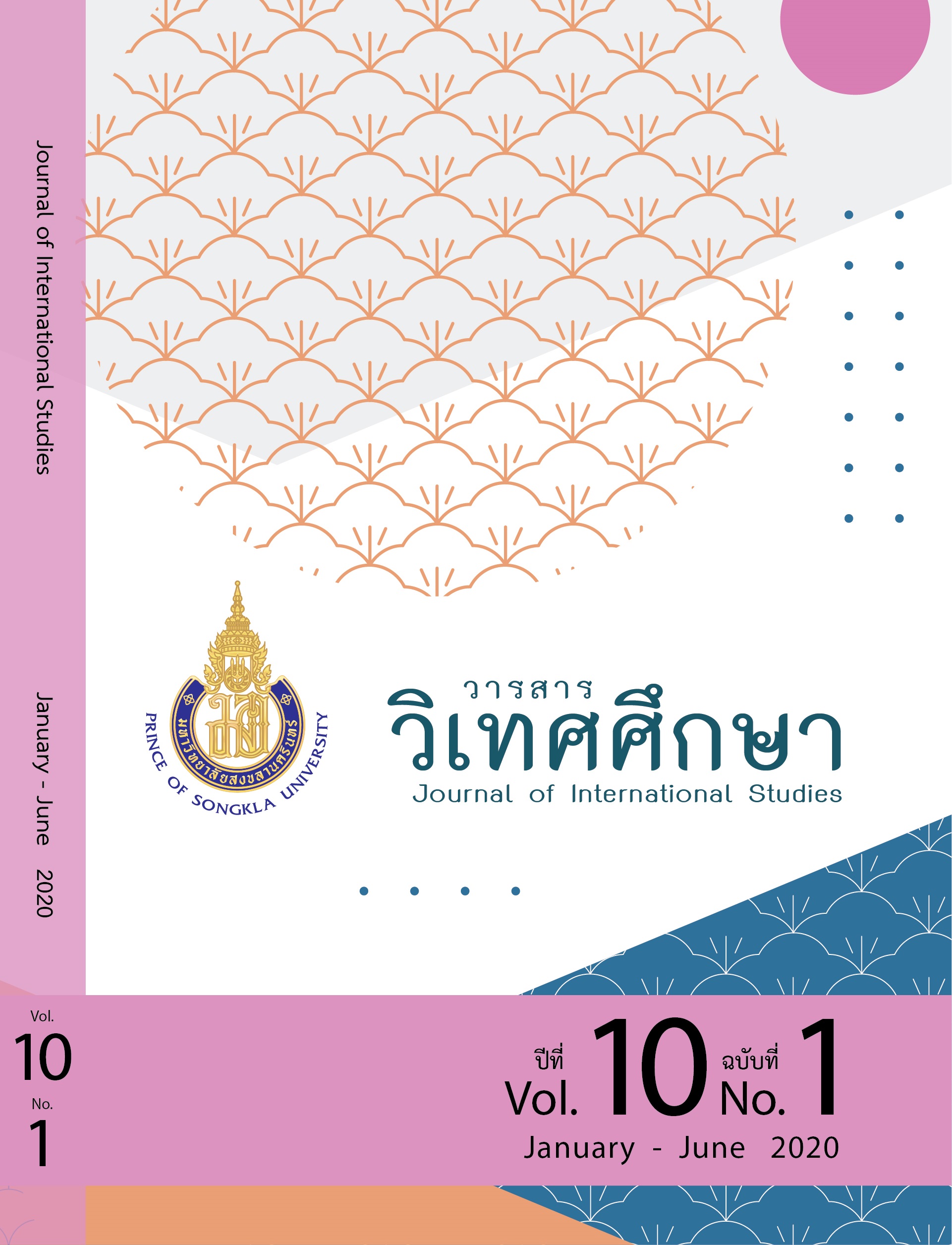The Influence of “Made in China 2025” upon Innovation Behavior of China’s Manufacturing
Main Article Content
Abstract
This paper is occupied with the “Made in China 2025” plan unveiled by China’s State Council in 2015 for transforming China’s manufacturing. In this paper, the panel data of A-share public manufacturing companies in 2014 and 2016 are taken, along with the adoption of the difference-in-differences model (“DID”), to examine influences that the plan imposes upon the innovation of a company. As far as manufacturing companies are concerned, it is disclosed through the empirical study that the plan has variably interfered with its innovation ability at different stages of its product development. Besides that, the innovation path has bridged innovation performance and fiscal subsidies. Finally, the paper has set forth suggestions from the perspectives of the enterprise and the government. In 2019, the fifth year since the plan was initiated, this paper will substantially benefit China’s manufacturing industry through ways to avail of policies, for a more efficient improvement in the product development of a company, and an acceleration in intelligent development of corporate innovation. This paper also provides further verification of the relationship between government policy implementation and enterprise innovation performance and provides more references for Chinese enterprises to effectively implement innovation behaviors.
Article Details
Statements and opinions expressed in articles herein are those of the authors and do not necessarily reflect the position of the editors or publisher.
Article, information, text, image, etc. which are published in Journal of International Studies, belong to Journal of International Studies. If anybody or any organization would like to use part or whole of them, they must receive written permission from Journal of International Studies before usage.
References
Atkeson, A., & Burstein, A. T. (2011). Policies to stimulate innovation. Economic Policy Paper, 11, 4-11.
Bronzini, R., & Piselli, P. (2016). The impact of R&D subsidies on firm innovation. Research Policy, 45(2), 442-457. doi.org/ 10.1016/j.respol.2015.10.008
Chen, H., & Na, C. (2018). A Study on Performance of Internal Control and R&D Subsidy. Management World, (12), 149-164. doi.org/10.3969/j.issn.1002-5502.2018.12. 013
Czarnitzki, D., Hanel, P., & Rosa, J.M. (2011). Evaluating the impact of R&D tax credits on innovation: A micro econometric study on Canadian firms. Research Policy, 40(2), 217-229. doi.org/10.2139/ssrn.651341
Dyer, J. H., & Singh, H. (1998). The relational view: cooperative strategy and sources of inter organizational competitive advantage. Academy of Management Review, 23(4), 660-679. doi.org/10.5465/AMR.1998.1255632
Ernst, D., & Kim, I. (2003). Global production networks, knowledge diffusion, and local formation. Research Policy, 31(2), 1417-1429. doi.org/10.1016/S0048-7333(02)00072-0
Fang, E. (2011). The effect of strategic alliance knowledge complimentarily on new product innovativeness in China. Organization Science, 22(1), 158-172. doi.org/ 10.1287/orsc.1090.0512
Guo, D., Guo, Y., & Jiang, K. (2016). Government-subsidized R&D and firm innovation: evidence from China. Research Policy, 45(6), 1129-1144. doi.org/10.1016/j.respol. 2016.03.002
Lazzarini, S. G. (2013). Strategizing by the government: Can industrial policy create firm-level competitive advantage? Strategic Management Journal, 36(1), 97-112. doi.org/ 10.1002/smj.2204
Mao, Q., & Xu, J. (2015). The Effect of Government Subsidy on Firms’ New Product Innovation: An Analysis Based on the Moderate Interval of Subsidy Intensity. China Industrial Economics, (6), 94-107.
Montmartin, B. & Herrera, M. (2015). Internal and external effects of R&D subsides and fiscal incentives: Empirical evidences using spatial dynamic panel models. Research policy, 44(5), 1065-1079.
Meuleman, M., & De Maeseneire, W. (2012). Do R&D subsidies affect SMEs’ access to external financing? Research Policy, 41(3), 580-591.
Podolny, J. M. (2001). Network as pipes and prisms of market. The American Journal of sociology, 107(1), 33-61
Peneder, M. (2008). The Problem of Private Under-investment in Innovation: A Policy Mind Map. Technovation, 28(8), 518-530.
Rao, N. (2012). Do Tax Credits Stimulate R&D Spending? The Effect of the R&D Tax Credit in its First Decade. Journal of Public Economics, 140(8), 1-12.
Wang, J. (2011). The measure of government R&D tax incentive intensity and its effect verification in China. Science Research Management, 32(9), 157-164.
Wen, Z., Zhang, L., Hou, J., & Liu, H. (2004). Intermediary effect test procedure and its application. Psychological Journal, (05), 614-620.
Xu, P., Zhang, M., & Zhai, X. (2020). The influence mechanism of R&D fiscal subsidy on regional patent output: an adjustable intermediary model. Journal of hunan university of science and technology (social sciences), 23(01), 75-83.
Yang, C.H., Huang, C.H., & Hou, T.C.T. (2012). Tax incentives and R&D activity: Firm-level evidence from Taiwan. Research Policy, 41(9), 1578-1588. doi.org/10.1016/j.respol.2012.04.006
Ye, K., & Zang, W. (2016). External Supervision and Classification Shifting of Business Expense. Management World, (1), 121-138.
Yang, Y., Yang, D., & Liu, A. (2014). Study on the Influence of Government Innovation Policy Effecting on Companies’ Innovation Behavior and Performance. Journal of HebeiUniversity of Economics and Business, (12), 47-53.
Zhou, J., & Li, J. (2017). Influence Mechanism of Government’s Innovation Policies on Firm’s Innovation Performance. Technology Economics, (1), 57-65. doi.org/10.3969/jissn. 1002-980X.2017.01.007


